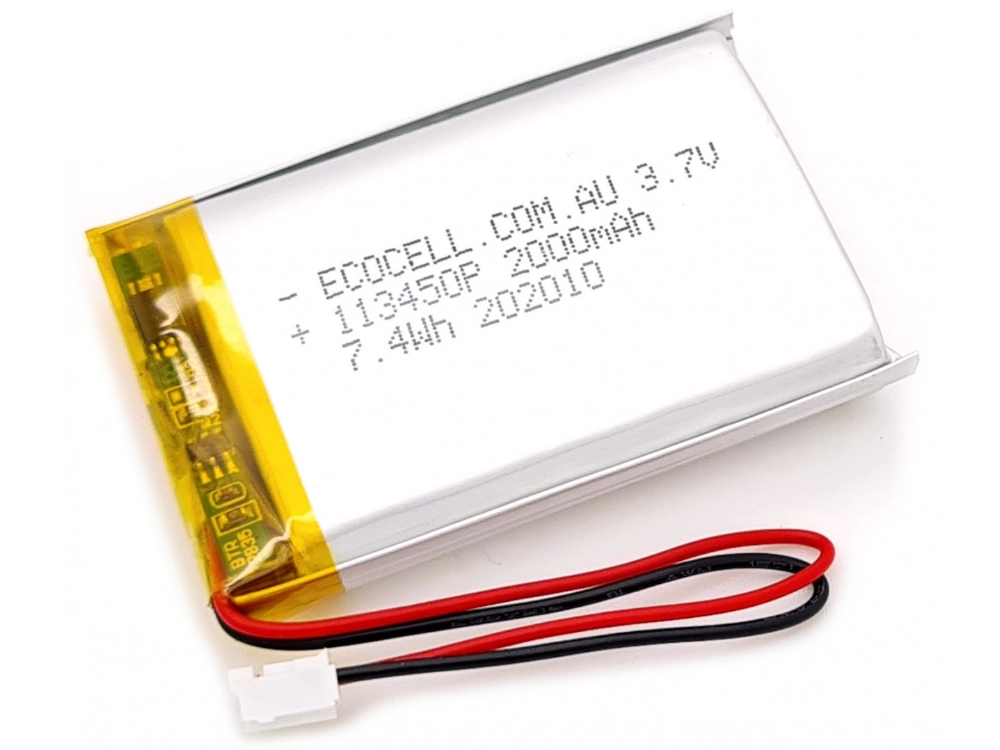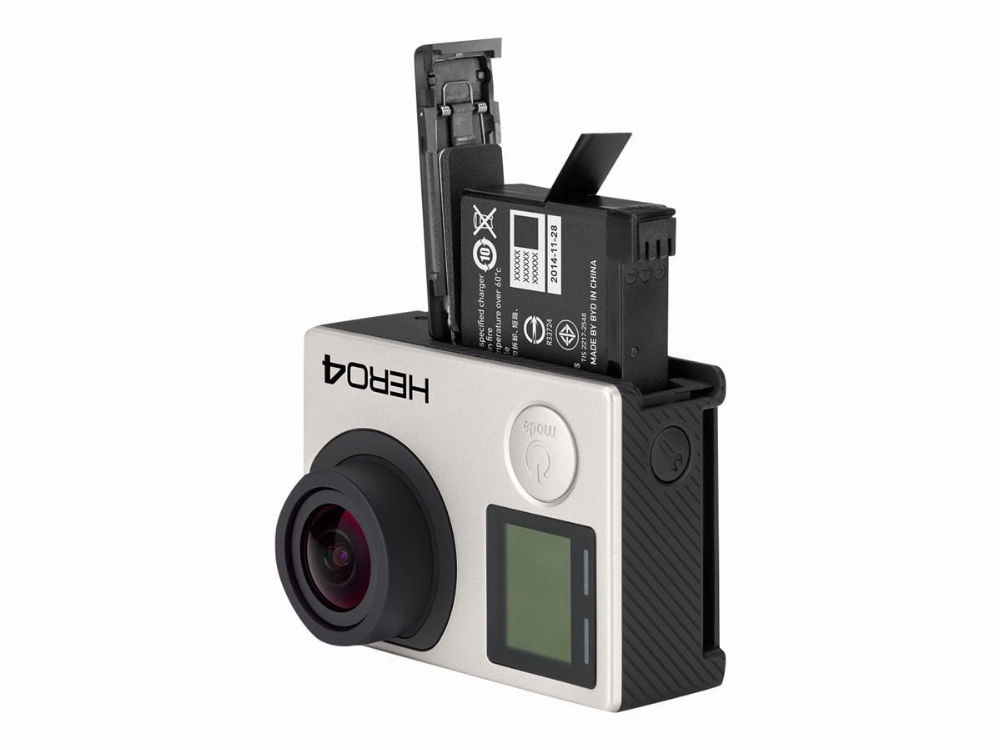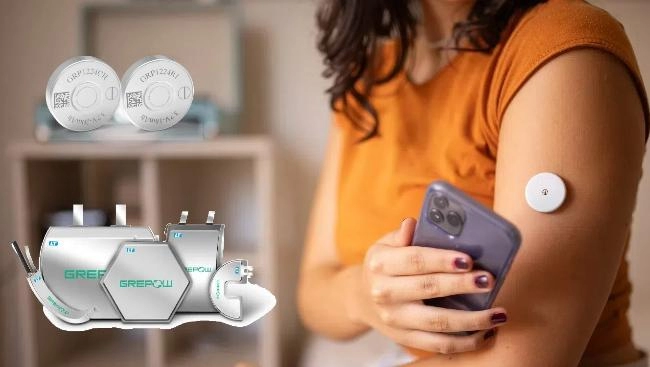3.7V batteries are an indispensable component of various modern electronic devices, from smartphones to drones. While they are widely used, many people do not understand their core characteristics and functions. In this detailed guide, we will explore the world of 3.7V batteries, from their basic characteristics to their diverse applications. Whether you are a technology enthusiast or simply a curious consumer, this guide will provide you with valuable insights into these versatile power sources.
Part 1: What is a 3.7V Battery?
A 3.7V battery is a lithium-ion battery with a nominal voltage of 3.7 volts. This value represents the average voltage the battery maintains during most of its discharge cycle. These batteries are highly regarded for their energy density, meaning they can store a large amount of power in a compact and lightweight design, making them ideal for portable electronic devices.
Key Benefits:
- High Energy Density: These batteries offer higher energy storage capacity for their size compared to other battery types.
- Lightweight: Ideal for portable and weight-sensitive devices.
- Long Life: Capable of withstanding numerous charge cycles before significant performance degradation.
Part 2: Why 3.7V?
The 3.7V rating is the result of the lithium-ion battery chemistry. These batteries typically range from 3.0V near discharge to 4.2V when fully charged. The nominal 3.7V is the average voltage during the discharge cycle.
Reasons for 3.7V:
- Optimal Performance: This voltage strikes a balance between energy density and safety.
- Efficient Power Supply: Provides ample power for most portable devices while minimizing heat generation.
- Standardization: Many modern devices are designed to be powered by this voltage, making 3.7V batteries a common choice.
Part 3: Types of 3.7V Batteries
There are several types of 3.7V batteries to choose from, each with its own unique characteristics and applications:
- Lithium-ion (Li-ion): The most commonly used type, known for its high energy density and long life. Commonly found in smartphones, laptops, and various other portable devices.
- Lithium Polymer (Li-Po): Offer flexible form factors, making them ideal for slim devices like tablets and drones. Li-Po batteries are also considered safer and more stable.
- Lithium Iron Phosphate (LiFePO4): Known for their superior safety and thermal stability, making them ideal for safety-critical applications such as electric vehicles and energy storage systems.
- Lithium Manganese Dioxide (LiMnO2): Best suited for high-power devices due to its ability to deliver high current.
Part 4: 10 Key Parameters of 3.7V Lithium-Ion Batteries
3.7V lithium-ion batteries are a popular and widely used type of battery. Here, we detail their parameters:
- Nominal Voltage: 3.7V (average voltage throughout the discharge cycle)
- Fully Charged Voltage: 4.2V (maximum voltage when fully charged)
- Discharge Termination Voltage: 3.0V (minimum safe voltage to prevent battery damage)
- Capacity: Typically ranges from 500mAh to 3500mAh, depending on the specific model and its intended use.
- Charging Current: Typically rated between 0.5C and 1C (where ‘C’ represents the battery’s capacity, e.g., 1C for a 1000mAh battery equals 1000mA). Fast charging is often limited to 1C.
- Discharge Current: Typical continuous discharge rates range from 0.5C to 2C, but higher discharge rates up to 5C are available for specialized applications such as power tools.
- Energy Density: Typically between 150 Wh/kg and 250 Wh/kg, affecting overall energy storage capacity.
- Cycle Life: Capacity drops to around 80% of its original rating after 300 to 500 charge cycles at 80% Depth of Discharge (DoD).
- Weight: A single cell typically weighs between 30 grams and 50 grams, depending on capacity and form factor.
- Operating Temperature: Typically operates between -20°C and +60°C during charging and discharging.
Understanding these parameters helps in selecting the appropriate battery type for various applications, ensuring optimal performance and longevity. To learn more about lithium-ion battery solutions, visit our Lithium Battery Buying Guide.
3.7V Lithium-Ion Battery Explained
Part 1: What is a 3.7V Lithium-Ion Battery?
A 3.7V lithium-ion battery is a common type of rechargeable battery widely used in various portable devices. Known for its high energy density, lightweight design, and long life cycle, it is an ideal power source for devices like smartphones, laptops, and drones.
Key Features of 3.7V Lithium-Ion Batteries:
- Nominal Voltage: 3.7V
- Capacity: Varies, typically between 500mAh and 5000mAh
- Chemistry: Lithium Cobalt Oxide (LiCoO2), Lithium Manganese Oxide (LiMn2O4), or Lithium Iron Phosphate (LiFePO4), depending on the intended use
- Cycle Life: Typically lasts for 300 to 500 charge cycles
- Operating Temperature: Best at room temperature but can withstand a range of temperatures
Part 2: How Does a 3.7V Lithium-Ion Battery Work?
A 3.7V lithium-ion battery stores and releases energy through chemical reactions of lithium ions between the electrodes inside the battery. The ions move between the anode and cathode during charging and discharging, efficiently storing and delivering electrical energy.
Working Principle:
- Charging: When charging, a constant current is applied until the voltage rises to the full voltage of 4.2V.
- Discharging: When the battery is in use, lithium ions move towards the cathode, releasing stored energy and reducing the battery’s voltage.
Part 3: Key Specifications of 3.7V Lithium-Ion Batteries
Here are the important specifications to consider when selecting a 3.7V lithium-ion battery for your device:
- Voltage: Typically 3.7V, with a charging voltage of 4.2V and a discharge cut-off voltage of 3.0V
- Capacity: Measured in milliampere-hours (mAh), it indicates the amount of electrical charge the battery can store and provide
- Charge/Discharge Rate: The maximum rate at which the battery can be safely charged or discharged, often expressed as a “C-rate”
- Energy Density: The amount of energy stored per unit of weight or volume, affecting the battery’s size and performance
- Cycle Life: The number of charge and discharge cycles a battery can undergo before its capacity reduces to 80% of its original value
Part 4: Charging and Discharging 3.7V Lithium-Ion Batteries
Charging:
- Charging Voltage: 3.7V lithium-ion batteries are charged to a maximum of 4.2V.
- Charging Stages:
- Constant Current (CC): The battery is charged at a constant current (typically 0.5C to 1C) until it reaches 4.2V.
- Constant Voltage (CV): Once 4.2V is reached, the voltage is held constant. The current gradually decreases until it reaches a cut-off current, indicating that charging is complete.
- Safety: Always use a charger specifically designed for 3.7V lithium-ion batteries that includes overcharge protection to prevent overheating or damage.
Discharging:
- Discharge Voltage: Avoid discharging the battery below 3.0V to prevent damage.
- Discharge Characteristics: The voltage gradually decreases with use. Discharging below 3.0V can lead to battery instability and capacity loss.
- Battery Management System (BMS): Most batteries are equipped with a BMS to monitor voltage levels and prevent over-discharge.
How to Charge:
- Use the Correct Charger: Always use a charger designed specifically for 3.7V lithium-ion batteries, ensuring it has overcharge protection.
- Charge in Safe Conditions: Avoid charging in extreme temperatures or near flammable materials.
- Monitor Charging: Ensure the charging voltage does not exceed 4.2V to avoid overcharging.
Part 5: How to Read Lithium Battery Discharge and Charge Curves?
Understanding the discharge and charge curves of a 3.7V battery is crucial for determining its performance. The discharge curve shows how the battery voltage decreases during use, while the charge curve shows how the voltage increases during charging, with a rapid voltage increase during the constant current charging phase and a gradual flattening of the voltage during the constant voltage charging phase.
Part 6: Which 3.7V Battery Should I Buy?
Choosing the right 3.7V battery depends on the specific application and the device it will power. Here are some recommendations based on common use cases:
- Smartphones and Tablets: Lithium polymer batteries are ideal due to their slim form factor and lightweight nature.
- Laptops: Lithium-ion batteries offer excellent capacity and long life, making them suitable for laptop applications.
- Drones and RC Models: Lithium polymer batteries provide high power output, a lightweight design, and long flight times, making them ideal for drones.
- Power Tools: LiMnO2 or LiFePO4 batteries are suitable for high-current applications, capable of delivering high power output safely.
Part 7: How Long Does a 3.7V Battery Last?
The lifespan of a 3.7V battery depends on several factors, such as usage patterns, charging habits, and battery quality. On average, a 3.7V battery lasts for 300 to 500 charge cycles, after which the battery capacity typically begins to degrade (approximately 2 to 3 years).
Factors Affecting Battery Life:
- Usage Patterns: Frequent and heavy usage can shorten battery life. Devices that require high current will deplete the battery faster.
- Charging Habits: Good charging habits, such as avoiding overcharging and deep discharging, can significantly extend battery life.
- Storage Conditions: Storing batteries in a cool, dry place at about 50% charge can help prolong their lifespan.
- Battery Quality: High-quality batteries from reputable manufacturers typically last longer and perform better.
Part 8: 3.7V Battery Capacity
Battery capacity, measured in milliampere-hours (mAh), indicates the amount of electrical charge the battery can store.
- 500mAh – 1000mAh: Typically used in small devices like Bluetooth headsets, fitness trackers, and small remote controls.
- 1000mAh – 3000mAh: Suitable for smartphones, handheld gaming consoles, and compact cameras, offering a good balance between size and performance.
- 3000mAh – 5000mAh: Used in larger or more power-hungry devices like tablets and portable speakers.








